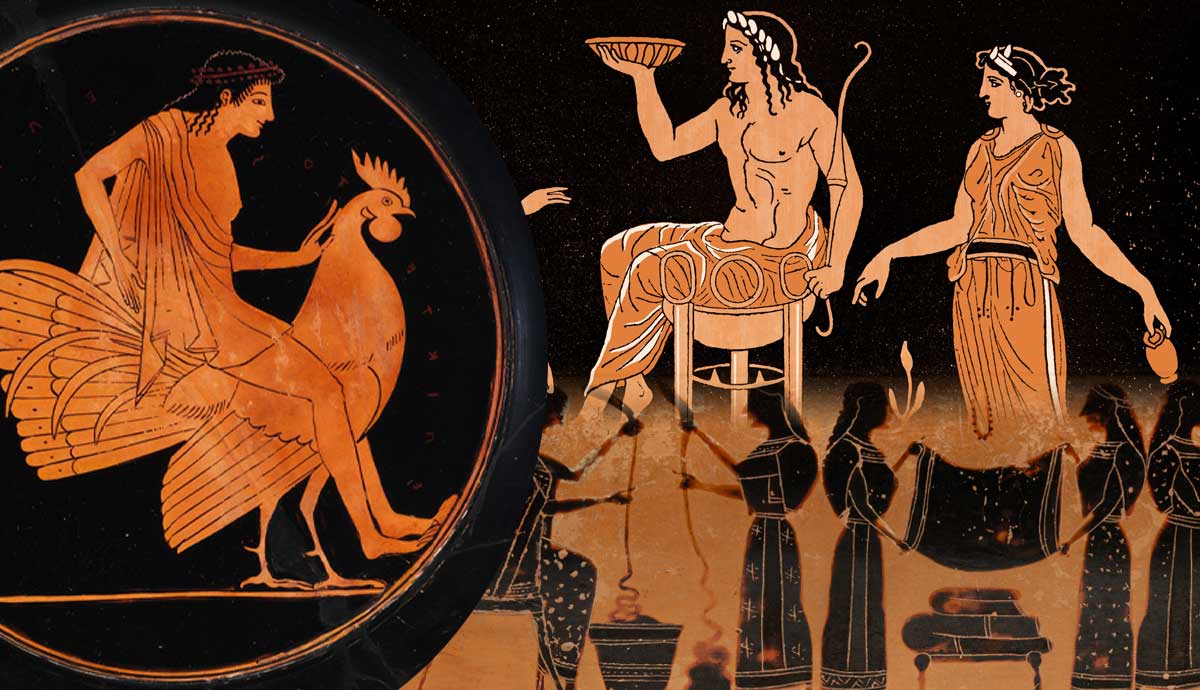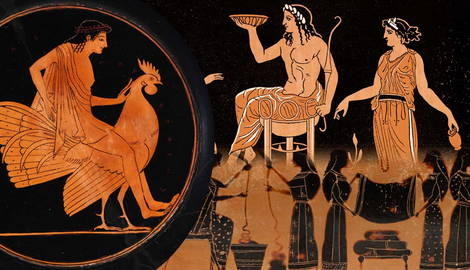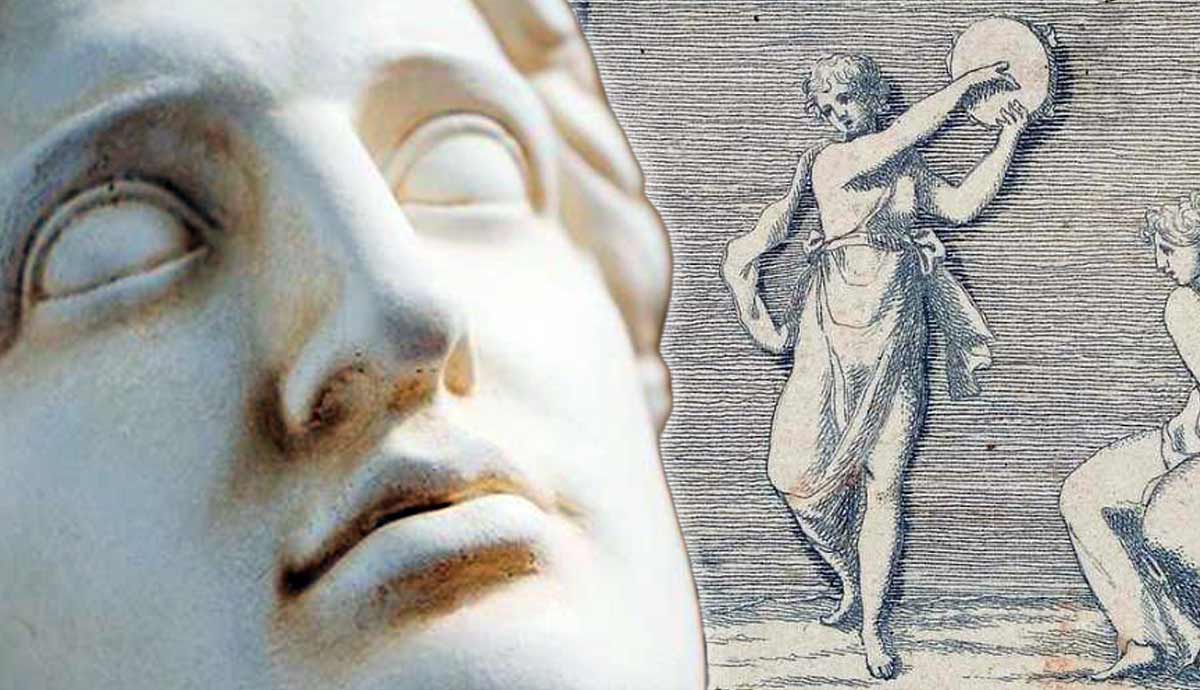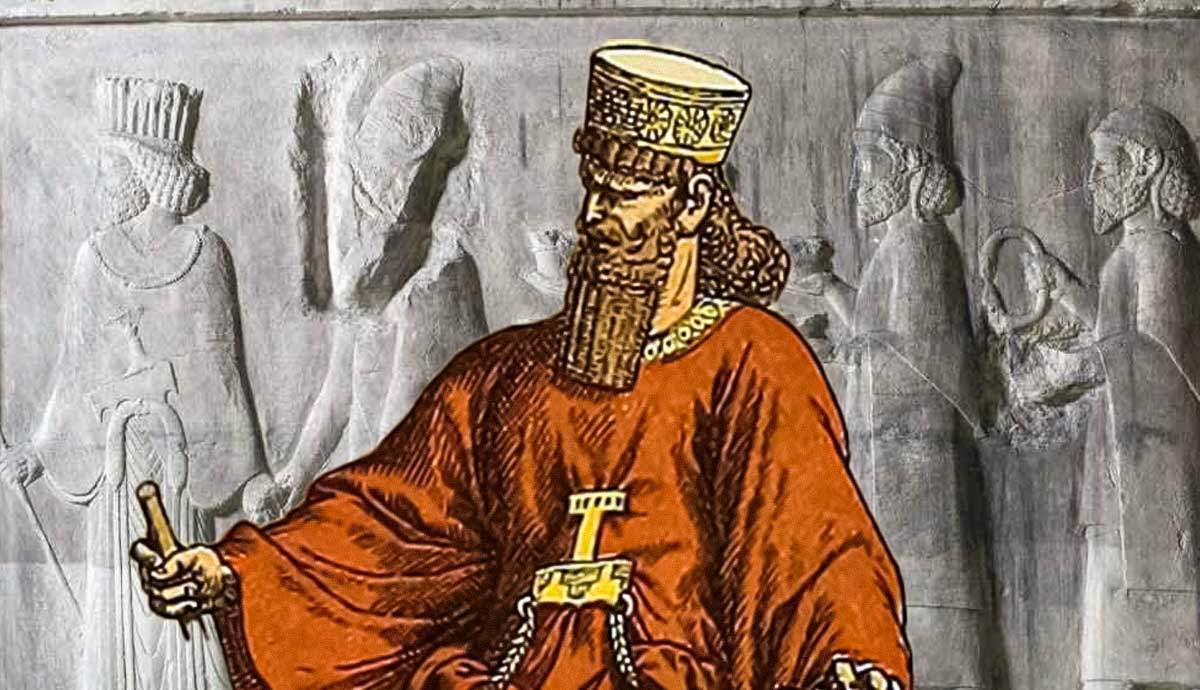
Ancient Greek vase painting is fascinating, fun, and with few tricks, easy to enjoy. The unique paintings on ancient Greek pottery are like letters from the past. They allow us to learn from the past and offer valuable information about life, values, religion, customs, and traditions in ancient Greece. The images are not simple snapshots of life in ancient Greece. And they are not just illustrations of Greek myths. Instead, the language of the paintings is much more complex and interesting.
A Very Short Introduction Into Greek Vase Painting

Few basics before we can get going. We already see distinctive Greek styles during the Bronze Age, with elaborative images of people and animals. However, the greater artistic expression in vase painting began in the 8th century BCE. From the 6th century BCE, the paintings start to favor people, mythical scenes, gods, and daily life scenes.
The vases were produced in various regions across ancient Greece, with notable production centers being Athens, Corinth, and Sparta. In terms of styles, different regions had their distinctive characteristics. The Attic style from Athens was known for its refinement, delicate details, and elegant compositions. The Corinthian style featured intricate animal and floral motifs. The Laconian style, associated with Sparta, had a more austere aesthetic.

Vases were used in religious ceremonies, funerary rites, and everyday life. They were used as containers for liquids such as wine and oil. The vases were also important in Mediterranean trade because goods such as grains and oil were stored in huge amphora-shaped vases.
The vase painters were not considered artists in their own time, although some were more famous than others. They were considered artisans. The pottery was used daily, and most people could afford painted vases. Wealthy individuals, however, commissioned the most elaborate. Pottery production in ancient Greece gradually declined, particularly after the Roman Empire took over Greece in 31 BCE. Metal and glass replaced pottery, and artists began experimenting with various art forms.
Ancient Greek vase painting stands as a remarkable testament to the artistic and cultural achievements of the ancient Greeks. This art form, characterized by intricate designs and vibrant depictions, holds great significance in our understanding of the history and mythology of ancient Greece.
Techniques and Styles of Vase Painting

Greek vase painting encompassed various techniques and styles that evolved, but the prominent techniques used were black-figure and red-figure pottery. Black-figure pottery, prevalent from the 7th to the early 5th century BC, involved the application of a clay slip that turned black during the firing process. The figures were then carved with fine lines to reveal the reddish clay beneath, creating detailed silhouettes. Red and white paints were used to enhance details and add color accents. With its stylized and rigidly frontal figures, black-figure pottery gradually gave way to the more dynamic and naturalistic red-figure style.
Red-figure pottery emerged around the late 6th century BCE and became dominant until the end of the 4th century BC. In this technique, the background of the vase was painted black, while the figures remained in the natural reddish color of the clay. The details and outlines of the figures were added using a brush, resulting in greater precision. The vase painters began experimenting with 3-dimensional illusions, perspective, and anatomical accuracy, achieving greater realism and expressiveness.
The vase paintings show us different aspects of ancient Greek society, including mythology, religious beliefs, historical events, daily life, and rituals. Other motifs included ornamental patterns, floral designs, and geometric patterns.
How Should We Look at an Ancient Greek Vase Painting?

The vases were not painted just for decoration. The images carried symbolic and narrative significance. Archaeologists and art historians specializing in Greek vase painting spend their whole careers interpreting and studying the context and symbolism of these paintings. They analyze the subjects, figures, and motifs portrayed in images down to every detail to understand their cultural, religious, mythological, and social significance. And there is a lot to research. Over 40,000 vase paintings have been published, and thousands more are still in storage. Not to mention those which have not yet been discovered.
What helps the interpretation is that the iconography of these vases was often drawn from a shared repertoire of symbols, myths, and narratives that ancient Greeks were very familiar with. People knew these images and understood how to read them. A depiction of a specific mythological scene might convey moral or religious teaching, while scenes of athletic contests could represent the idealized human form and values of physical prowess. Including certain symbols and attributes helped identify the depicted figures and conveyed their specific meanings. And there were a lot of humorous images as well.
When you start looking at a vase painting, pay attention to the details of the people. Small things, such as gestures, can tell a lot. Some basic visual clues include the way painters distinguished men from women. Women are painted with white skin, while men have red or brown skin. Holding the head with both hands or unruly hair usually means great distress. A covered or hidden head can mean fear or rape. Older men have a beard, whereas younger men do not. People are almost always portrayed from a profile, but if they stare straight at you, they are either mad, sick, or foreign.
Symposium scenes where the men gathered to talk, impress each other, drink to the excess, and sometimes engage with courtesans can be recognized from a reclining half bed and a kylix-shaped wine-drinking vessel. Athletes and great heroes are often pictured naked to emphasize the pure nature of their beauty. Later in this article, there are tips on recognizing certain gods, battle scenes, and myths.
A Single Painting Can Tell a Story

While not all vase paintings were explicitly narrative, many depicted scenes from myths, legends, historical events, and everyday life that conveyed a story. Narrative vase paintings aim to visually communicate a sequence of events or episodes from a particular story or myth. But how can one single image tell a whole story? Artists employed various communication techniques, such as using multiple figures and actions within a single composition, hierarchical scaling to emphasize key moments or characters, and inscriptions or labels to provide additional context.
The narrative content depicted in vase paintings varied widely, ranging from mythological tales to heroic exploits, historical events, and scenes of daily life. Mythological narratives, in particular, were popular, showcasing stories from Greek mythology and the adventures of gods, goddesses, and heroes.
Continuous narrative or synchronic narrative techniques allowed artists to present a sequential depiction of events or multiple moments of a story within the constraints of a two-dimensional surface of the vase. The viewers could engage with the visual storytelling, following the narrative as it unfolded across the different scenes or registers of the vase painting.
The Synchronic Narrative Storytelling Technique

The synchronic narrative technique in ancient Greek vase painting shows multiple moments or episodes from one story within a single image. This method allows us to see the entirety of the story with one glance.
In this technique, the most important characters in the story are always in the center and can appear larger than others. The different episodes in one story can also be separated with frames or painted in different zones. This allowed artists to emphasize specific aspects and convey particular themes or messages.
The synchronic narrative technique was commonly used to depict mythological stories, heroic legends, and historical events. It allowed vase painters to encapsulate the essence of the narrative and highlight key moments or characters within a limited space. Because the ancient Greeks who bought these vases were so familiar with the stories, they could immediately recognize the overall narrative and would greatly enjoy this type of visual storytelling.
While the synchronic technique provided an overview of the narrative, it did not present a detailed chronological account of events. It prioritized essential elements and highlights of the story, enabling artistic creativity and interpretation. This technique showcased the skill and creativity of Greek vase painters in visually conveying complex narratives within the limitations of a static medium.
The Continuous Narrative Storytelling Technique

The continuous narrative technique is a rare but delightful way to tell a story on a vase painting. It can be compared to a modern-day cartoon. The vase painting depicts a story in a continuous sequence of events that unfold linearly and chronologically. The continuous narrative technique allows the progression of time and actions portrayed across multiple scenes, enabling the viewer to follow the story unfold.
Greek vase painters organized the imagery in a sequence of connected episodes to achieve a continuous narrative, often arranged in registers or bands around the vase. Each scene represented a distinct moment or event in the story, with figures and objects positioned to convey the flow of action and movement.
Greek vase painters used this technique to depict a range of narratives, including mythological tales, epic poems, historical events, and everyday activities. The continuous narrative approach showcased their skill in composition, storytelling, and the ability to capture the dynamic nature of a narrative within the confines of a two-dimensional surface.
Images of Myths: Imagination, Oral Tradition, and Theater

Greek mythology played a significant role in ancient Greek culture, and these myths were important sources of inspiration for artists and storytellers. Greek vase painters frequently created scenes from well-known myths, gods and goddesses, heroic exploits, and legendary events on their pottery. These were also popular among buyers, so there was a demand for these images.
The vase painters would portray key moments and episodes from the myths, often capturing the dramatic or iconic scenes that defined the particular story. These visual representations reinforced the cultural and religious significance of the myths, allowing the viewers to engage with the stories and connect with their shared cultural heritage.

These images are not, however, illustrations of the myths. People, especially working men like the vase painters, were not widely literate, and Greek mythology was communicated to people through oral poetry and drama performances. Sometimes, the painter has added elements that are not included in the myths as we know them, leading us to believe that he has used his imagination or heard the myth in a different form than written down. Occasionally, we can see that the image is painted based on a theatrical performance.
In addition to mythological scenes, Greek vase paintings depicted religious rituals, daily life activities, athletic contests, and historical events. However, the representation of ancient myths remained a prevalent and prominent theme throughout the history of Greek vase painting.
How to Recognize 6 Common Figures

1. Zeus
The king of the gods and the god of thunder and lightning,was usually depicted with regal accessories and a thunderbolt. Animals to look for are eagles, lions, and bulls.
2. Athena
The goddess of wisdom, warfare, and crafts was often portrayed in armor, holding a spear and shield, with an owl, and frequently appearing in battles or heroic exploits.
3. Heracles
The most celebrated hero in Greek mythology was known for his incredible strength and numerous heroic deeds. He is often depicted battling a lion or mythological beasts and wearing lion skin as a cape.
4. Apollo
The god of music, poetry, prophecy, and archery was commonly portrayed as a youthful and athletic figure playing the lyre or holding a bow and arrow.
5. Dionysus
The god of wine and theater was often in scenes of festive celebrations, accompanied by maenads and satyrs and wearing a crown of ivy leaves.
6. Achilles
Achilles was not a god but a hero of the Trojan War and a central character in Homer’s Iliad. Achilles is typically depicted in scenes related to the mythical Trojan War.
Understanding the Meaning of 9 Animals & Mythical Beings

1. Lions
Lions were frequently depicted in Greek vase paintings as symbols of power, strength, and nobility. Lions can also be seen as guardians of buildings, such as temples. They were associated with gods such as Apollo and Dionysus and often appeared in scenes related to the heroic exploits of Heracles or hunting.
2. Horses
Horses held significant cultural and practical value in ancient Greece. They were essential in scenes of chariot racing, battles, and equestrian events. Horses were expensive, and only a few people had the means to own horses and take care of them. Therefore, horses represented status, aristocracy, and military prowess.
3. Dolphins
Dolphins were revered in ancient Greek mythology and were associated with the god Poseidon. They symbolized the power and grace of the sea and were often depicted alongside maritime scenes, such as ship voyages or sea creatures. Whereas lions can be drawn incorrectly (few people had seen a lion), dolphins are very accurately painted.
4. Birds
Various bird species were commonly depicted in Greek vase paintings, including swans, owls, doves, and eagles. Birds represented wisdom, fertility, freedom, and divine messengers.
5. Snakes
Snakes held symbolic significance in Greek mythology. They were associated with healing, protection, and regeneration. Snakes were often depicted in vase paintings alongside gods like Asclepius, the god of medicine.
6. Deer
Deer were commonly depicted in Greek vase paintings as symbols of grace, agility, and the natural world. They often appeared in scenes related to hunting or as companions of Artemis, the goddess of the hunt.
7. Mythical Creatures
Greek vase paintings frequently depicted mythical creatures such as griffins, centaurs, and sphinxes. These hybrid creatures served decorative and narrative purposes, often appearing in scenes related to mythology or heroic exploits.
8. Roosters and hares
These animals were typically used as love gifts from older men to young boys. Images of these animals are especially found in vessels used in symposiums.
9. Cats
The absence of cats in the vase painting is a mystery. Anyone who has been to Greece can see that cats are everywhere. Were there no cat image buyers, or were they not considered important? If you find a cat in a vase painting – please email me!
Recognizing Theatrical Scenes in Vase Painting: 6 Key Images

1.Theatrical Masks
Masks were integral to ancient Greek theater. In vase paintings, theater scenes often depict actors wearing masks that represent the characters they are portraying. These masks can have exaggerated facial features and expressions and may be painted in different colors to indicate different roles.
2. Actors in Costume
Look for figures in elaborate costumes that resemble the attire of ancient Greek actors. These costumes typically consisted of robes, tunics, and sometimes specific accessories or props associated with the portrayed characters.
3. Theatrical Props
The inclusion of props can also indicate a theater scene. Look for spears, shields, musical instruments (such as lyres or flutes), and other items used during a theatrical performance.
4. Stage or Theatrical Setting
Pay attention to the background or setting of the scene. The presence of a stage or a backdrop with architectural elements resembling a theater structure, such as a scene or a theater seating area, can mean a theatrical context.
5. Gestures and Poses
Actors in theater scenes may be depicted in specific poses or engaged in dramatic gestures that suggest performance. Look for dynamic poses, expressive body language, and gestures that convey action, dialogue, or emotion.
6. Chorus
Sometimes, a group of figures arranged in a particular formation may represent a chorus, a key component of Greek theater. The chorus members would often be shown singing, dancing, or engaging in coordinated movements.
6 Reasons Why There Are So Many Battle Scenes in Greek Vase Paintings

1. Martial Culture
Ancient Greece had a deeply rooted martial culture, with warfare playing a central role in the lives of its citizens. Greek city-states frequently fought wars and conflicts, and military prowess was highly valued. Vase painting, as a reflection of society, often depicted scenes related to war and battles as a reflection of this cultural emphasis.
2. Celebration of Heroic Ideals
Greek mythology and literature were filled with tales of heroic exploits and epic battles. Heroes like Achilles, Heracles, and Theseus were revered for their martial achievements. Vase painting provided a visual medium to celebrate these heroic ideals and glorify the heroic feats of legendary warriors.
3. Commemoration and Tribute
Vase paintings, particularly those commissioned for funerary purposes, often served as tributes to fallen warriors or as commemorative pieces for military victories. These paintings allowed for the remembrance and honor of the deceased or the acknowledgment of military achievements.
4. Artistic Representation
War and battle scenes allowed artists to showcase their skill in depicting dynamic action, movement, and detailed portrayals of warriors, weapons, and armor. Such scenes allowed for the display of technical prowess and the exploration of human anatomy and physicality in art.
5. Competitive Games
Greek vase painting also depicted scenes from competitive games and athletic contests, such as the Olympics. These events often involved displays of physical prowess, including combat sports like boxing and wrestling, related to the theme of warfare and battle.
6. Patronage and Demand
The subjects of vase painting were influenced by the tastes and preferences of patrons who commissioned the artworks. Given the significance of warfare in Greek society, there was likely a demand for war and battle scenes. The vase painters chose images largely based on the demand from their customers.










